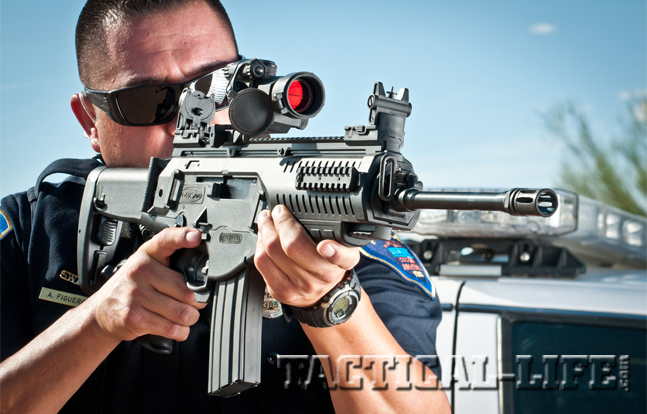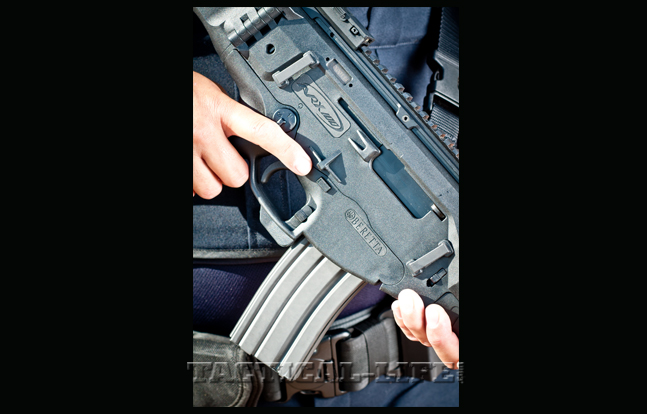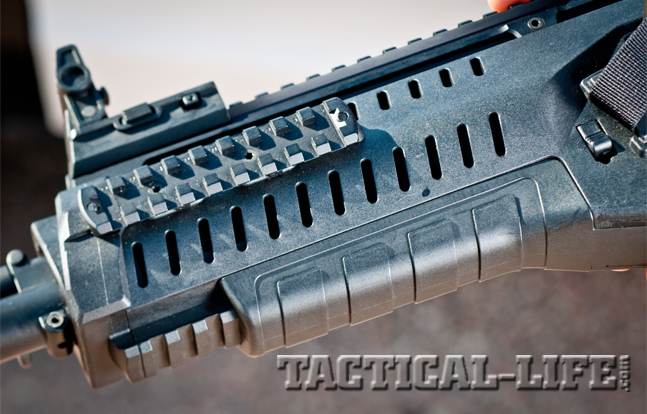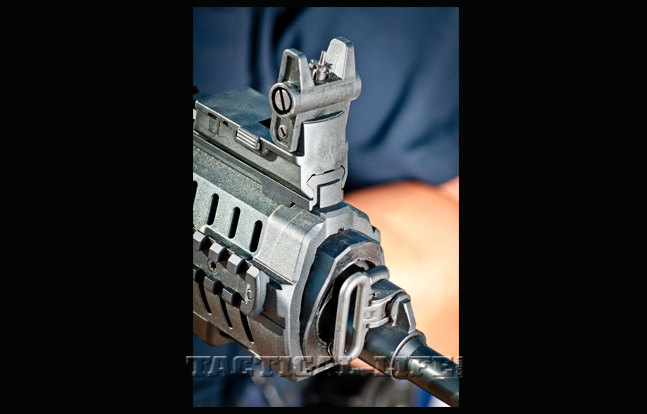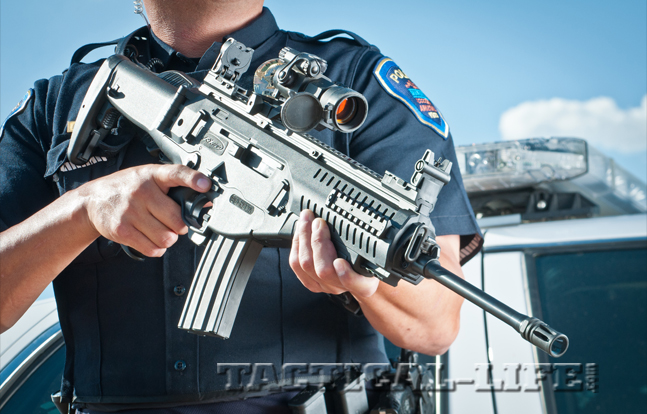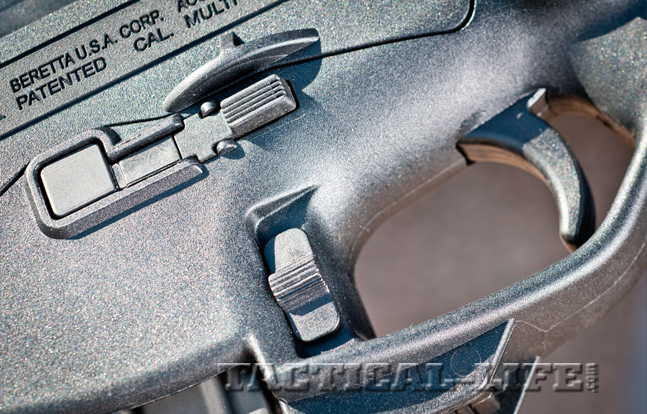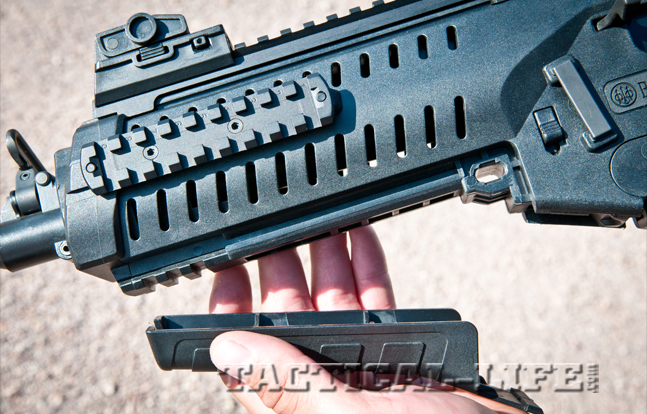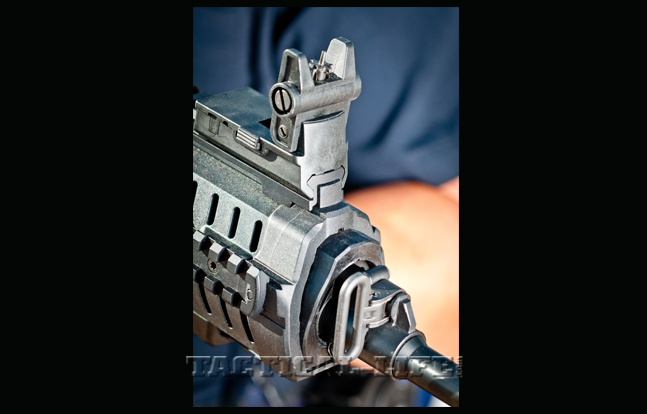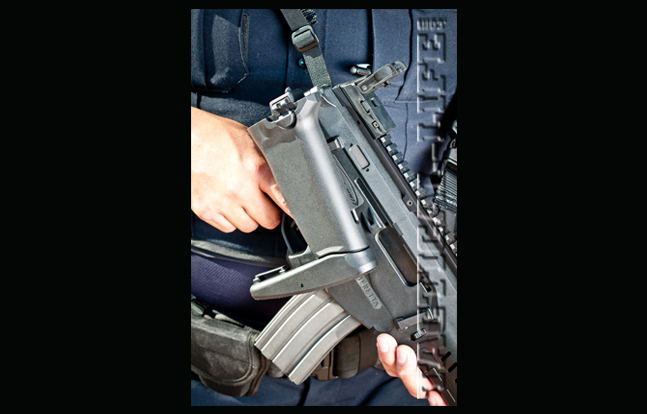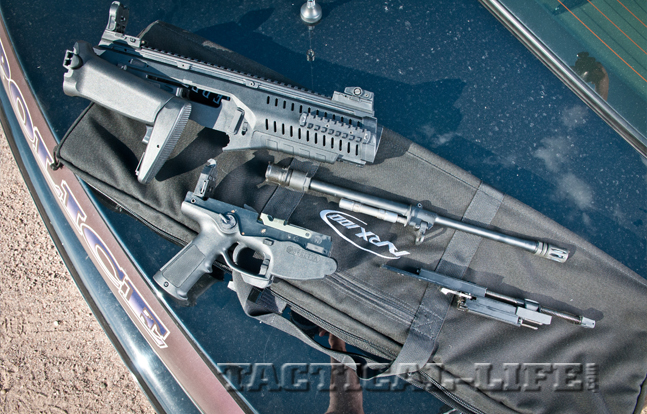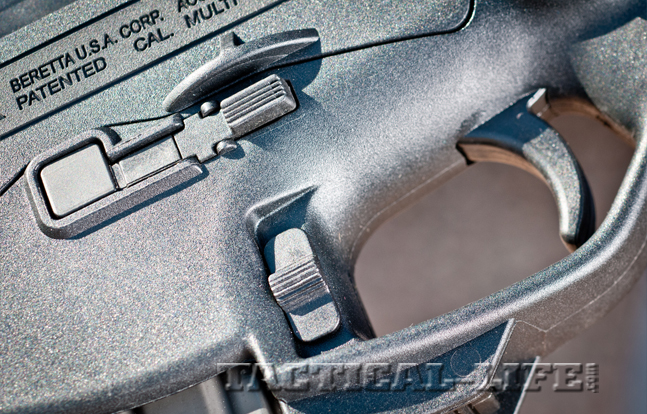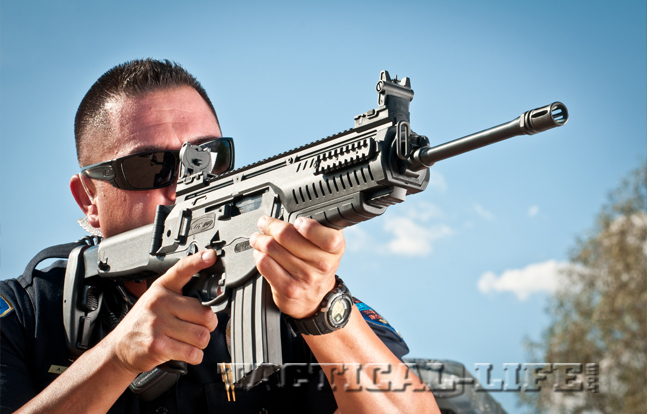For years, law enforcement has been transitioning from shotguns to carbines for patrol use. Shotguns are still used and do have their place, but many agencies are finding that the AR-15 serves their needs better. It has a higher magazine capacity, good fight-stopping power, lower recoil and excellent ergonomics. It is easy to use because the controls are in convenient and well-chosen places. But, as with all things mechanical, there is room for improvement. Beretta thought it could make a better carbine when, in 2007, it began the development of what would become the ARX160.
The gun is designed to offer features that are improvements on the AR. It also fires the same round as the standard AR-15—the 5.56mm NATO or .223 Remington—and uses the same magazine. Additionally, it is lightweight and retains the basic user features of the AR, (Click Here to view the Top 10 Beretta ARX100 Features) so this gun may appeal to those law enforcement agencies that view it as an improvement over the already well-accepted AR-15. The gun reviewed here is the ARX100, which is the semi-automatic version of the ARX160. There are some major control and internal differences between it and the AR-15, but the gun retains the basic utilitarian features and can accomplish the same tasks as America’s black gun.
GUN DETAILS:
The most obvious difference is its appearance. The ARX100 is a space-age-looking gun with Italian styling. The curved lines of the lower receiver and handguard contrast with the straight lines and jagged features of the upper receiver and rails. The gun makes extensive use of polymer, with limited amounts of steel and aluminum where polymer is not tough enough to withstand the stresses produced by the firing cycle. Along the full length of the receiver is an aluminum Picatinny rail that serves as a platform with plenty of room for mounting any type of optic a patrolman might need, including night-vision devices either in front or behind the main optic. At the front and rear of the rail are fully adjustable, flip-up, polymer sights for backup use. The rear sight has five apertures on a rotating disc that are marked for 100, 200, 300, 400 and 600 meters. At the front of the receiver, on each side, are 4-inch-long aluminum Picatinny rails to which accessories like lasers or tactical lights can be mounted. The bottom of the receiver has a short 1.5-inch polymer rail that can accommodate a vertical foregrip or bipod.
Advertisement — Continue Reading Below
Just behind the lower rail is a removable cover that conceals proprietary attachment points for other accessories. This is no doubt a carryover from the military version, which accommodates a grenade launcher. The ARX100 has six attachment points for a sling. Two of these are on each side of the receiver, one is on the buttstock and one—which rotates in a 180-degree arc—is attached to the top of the barrel at the front of the receiver. All are slots, so quick-detachable (QD) swivels or hooks will not work with this gun.
Out at the front of the barrel is a standard A2-style birdcage flash suppressor that is attached via threads. The 1-in-7-inch-twist barrel is lightweight and chrome lined for durability. The thin barrel, along with the sparing use of steel, makes this a lightweight gun that is easy to handle, weighing only 6.8 pounds unloaded. A very nice feature of the ARX100 is that the barrel can be removed in seconds without tools and without disassembling the gun. Just push down on two tabs located on the sides of the receiver and pull the barrel out. Along with it comes the piston assembly. The barrel appears to have a Melonite finish, which eliminates the need for a hard chrome lining because it is extremely hard and rust resistant. The piston assembly appears to be nickel-plated.
Advertisement — Continue Reading Below
The piston system is a bit different from what one normally associates with a piston design. In the ARX100, the piston is actually stationary, and the cylinder reciprocates back and forth on it when combustion gases are drawn off the barrel through a port. This is a long-stroke system and not the short-stroke system that is often seen in piston-driven ARs. The piston system has some advantages over the direct gas impingement system of the standard AR-15 because it keeps the receiver much cleaner and reduces the heat and resultant stress on the bolt. In addition, an aluminum barrel guide helps improve heat dissipation. The ARX100 employs an adjustable gas valve that accommodates the use of a wide selection of ammunition types. It also allows users to adjust the gas system for optimum reliability and operating endurance. The ARX100 is also ambidextrous. Other than the fact that the telescoping buttstock folds only to the right, all the controls and even ejection can be set up for the right- or left-handed shooter. And it can be done very quickly without special tools.
The magazine release is similar to and in about the same location as that of the AR-15. Just a push of the button on either side of the receiver causes the included 30-round, AR-style magazine to drop freely from the gun. Magazine changes are quick even though the magazine well is not beveled. But the magazine can also be released by pushing up on a button located behind the magazine well, just in front of the triggerguard. The bolt catch, which holds the bolt to the rear after the last round is fired, is also activated by pushing up on a slide located on each side of the lower receiver, just in front of the trigger. The firing grip never needs to be relinquished because just pushing down with the trigger finger releases the bolt. And the button on the bottom of the receiver that can be used to release the magazine also locks the bolt to the rear when pushed up. The safety is a rotating lever very similar to that of the AR-15. It’s also located in about the same place. Although it is a little stiff and could be a bit longer, it worked just like it was supposed to. It just required a little practice to get the hang of it.
To switch from right- to left-side ejection, all that is needed is a cartridge. Using the tip, just push a crossbolt located in a round hole at the back of the receiver to the right for right-side ejection and to the left for left-side ejection. It literally takes about one second to do. The charging handle can also be switched from side to side during the field stripping process without the use of tools. Disassembly is quick and easy. First, after making absolutely sure the gun is unloaded, the gun is cocked and the safety engaged. The buttstock is folded to the right and locked in place. Incidentally, the gun can be fired with the stock folded if needed in an emergency. Once the stock is folded, the safety is pushed about 30 degrees counterclockwise when viewed from the left side, and the locking plate at the rear of the receiver is pushed inwards with a finger.
Advertisement — Continue Reading Below
At the same time, the lower receiver is pulled down and away from the upper receiver. The bolt carrier group is then moved partway to the rear to an index point where the charging handle is pulled away from the carrier. It can then be rotated forward so it is in line with the axis of the bolt. At this point, the handle can be moved to the other side of the carrier if desired. If left in line with the bolt, the bolt carrier group can be removed from the back of the upper receiver. The recoil spring is then separated from the bolt carrier group. The barrel can be removed, as mentioned before. At this point, the bolt is rotated and removed from the rear of the carrier. A cam pin that holds the spring-loaded firing pin in the bolt is then removed, which allows the firing pin to be withdrawn from the rear. The rotating bolt has seven lugs similar to an AR-15 bolt, but it has two devices on each side that serve as extractors and ejectors. Depending on which side the crossbolt that controls ejection is pushed, one ejector/extractor will remain stationary and the other will move forward when the bolt is at the rear. This kicks the spent casing out of the ejection port. Very ingenious.
RANGE TIME:
This gun is derived from a battlefield carbine, so it is not a precision rifle, and groups averaged around 3 to 4 inches at 100 yards. During testing, not a single malfunction was encountered. For all testing, I used an EOTech XPS3 holographic sight. The recoil impulse in a piston gun feels a bit different compared to a direct gas impingement gun, and it was very manageable in the ARX100. (Click Here to see the Beretta Rifle NRA 2014 video)Whether shooting off the bench to test accuracy or in tactical drills from a variety of positions, the ARX100 handled well and was user-friendly, with the controls being easy to find and manipulate. If an officer is familiar with an AR-15, he will have no difficulty with the ARX100’s manual of arms. It will take only minimal orientation to become proficient. For those agencies that wish to transition from the AR-15 to the ARX100, the training period will be fairly short, making the ARX100 a viable choice for law enforcement.
Advertisement — Continue Reading Below
For more information on EOTech equipment, visit: http://www.eotechinc.com/
For more information on the Beretta ARX100 5.56mm NATO, visit berettausa.com or call 800-929-2901.
